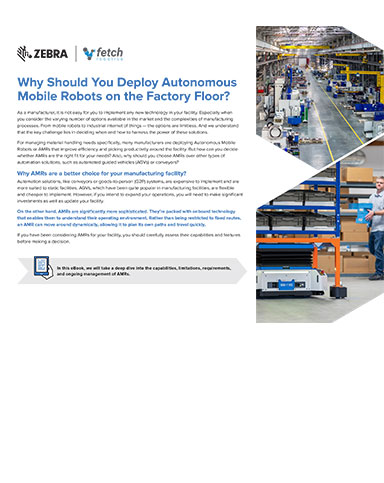Automated Vehicles (AVs): While skepticism abounds, there’s plenty of forward momentum
While there are several sides to this, and there will most assuredly be major issues to overcome, a tectonic shift is coming.
George Jetson probably had the first self-driving vehicle. Then, it was viewed as entirely futuristic. Now, not so much.
A recent television news segment focused on an elderly couple being driven around Phoenix in a completely autonomous Waymo vehicle. When the husband was asked what changes he’d like to see, he commented he was waiting for them to remove the steering wheel.
As a logistics professional, why should this matter and what’s the potential impact? The major benefits hit at least a couple of the cherished goals of good supply chain management: reducing cost and improving service.
Driverless vehicles eliminate most of the challenges and difficulties related to human pilots: they don’t get sick (apart from the occasional tech glitch); they don’t need the regulatory rest periods; they don’t need vacations; and they don’t forget or decline to show up for work. And, the driver shortage could soon become a forgotten topic.
When rolled up, all of this enhances service reliability and reduces operating costs in an era where the expenditures for moving product are becoming an increasingly larger share of selling and delivering it.
Progress is afoot. In March of 2022, the National Highway Traffic Safety Administration (NHTSA) eliminated the requirement for steering wheels in automated vehicles (AVs). This is, of course, a big leap forward, and also removes the temptation and the capability for people interfering with the vehicle’s performance.
Some may find this daunting, at least at the outset, but that’s really mainly a function of acclimating to the new world. There are many instances where automation has replaced human intervention with little or no consequence in the long run: elevators once had operators, as did the simple telephone. Nobody gives a second thought to the automation of these functions.
At some point—in the not-too-distant future—this will be true of motor vehicles, as it’s already in certain applications. The benefits of AVs, including safety improvements and the ability to expand highway capacity through better utilization, are compelling and will outstrip the value of human-piloted vehicles.
According to the NHTSA, in 2021, 42,939 people died in motor vehicle crashes—many of these crashes were tied to human error. And while AVs will never be perfect, they will drive the number of highway fatalities through the floor. The benefits of fewer injuries and fatalities, first-responder calls, hospital stays, emotional stress and damage and insurance claims will be pronounced.
Dr. Dieter Zetsche, former chairman, Daimler AG, spoke about a possible future world back in 2015: “Around 2020, the complete industry will start to be disrupted. You won’t want to own a car anymore. You will call a car with your phone. It will show up at your location and drive you to your destination. You will not need to park it. You pay only for the driven distance and can be productive while driving. Our great grandkids will never get a driver’s license and will never own a car. It will change the cities, because we will need 90% to 95% fewer cars. We can transform former parking spaces into parks.”
Is he right about this? Dr. Zetsche might have a utopian vision that missed its expected arrival—but the message is clear. AVs will change the fundamental relationships we have with cars and trucks, disrupting legacy industries, improving safety, and evolving infrastructure.
The opinion offered here is not shared by all. There are skeptics, with reasonable arguments, that say we don’t have the grid infrastructure to support all the demand for electricity; that alternative energy sources (e.g., wind, solar) are insufficient to close the gap; and that the sourcing and disposal issues around battery manufacture and scrapping are unresolved. So, they make the case that the EV/AV revolution will be much less consequential that the proponents claim.
While there are several sides to this, and there will most assuredly be major issues to overcome, a tectonic shift is coming—there’s so much momentum and belief in developing alternative ways of doing things. In spite of all the obstacles, I predict it will drive positive change in safety, the environment, infrastructure and the way we live our lives













